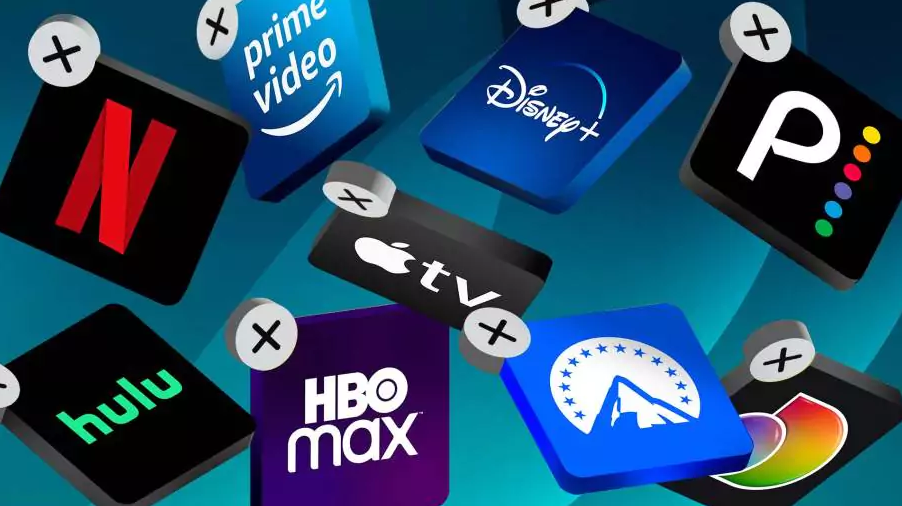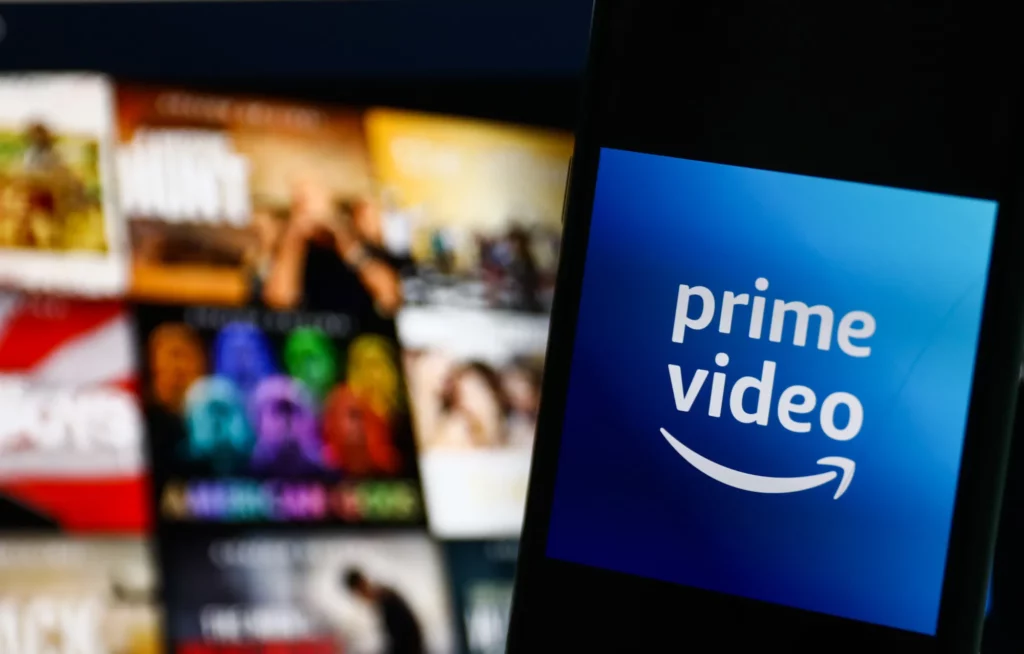Welcome to our comprehensive guide on monetizing video content through Subscription Video on Demand (SVOD)! In today’s fast-paced digital world, video has become an essential medium for entertainment, education, and communication. But how do you turn engaging video content into a consistent revenue stream? That’s where SVOD comes in—a highly popular monetization model with immense potential.
In this article, we’ll dive deep into the core concepts of SVOD, its advantages, and practical strategies for success. Whether you’re a content creator, business owner, or platform manager, you’ll find actionable tips and valuable insights to help you effectively leverage this model and maximize your earnings.
From understanding how SVOD works to identifying the key steps for implementation, we’ll walk you through everything you need to know to succeed. Let’s get started and unlock the power of subscription-based video monetization!
Video Monetization: The Different Methods
As video streaming becomes increasingly popular, the options for monetizing video content become broader. Many people automatically think about using YouTube and its ad-based VOD structure when they consider monetizing their content, but this is not the only option.
Each video monetization model has its individual purpose. That means they’ll be consumed differently and, in turn, monetized differently. Learning about the different business models available can help you generate more revenue through the right monetization strategy and even design your own hybrid revenue model that best suits your needs.
SVOD
SVOD stands for “subscription video on demand” and is used to provide on-demand access on a subscription basis.
Subscription Video on Demand (SVOD) has revolutionized the way video content is consumed and monetized. It offers a subscription-based model where users pay a recurring fee to access exclusive video content. This approach provides content creators with a predictable revenue stream while offering consumers a wide range of premium video content. Viewers pay for limited or unlimited-time subscription services that typically range from monthly to annually. In return for this fixed subscription fee, SVOD providers give timely access to a set video package.
Subscription video on demand is a type of VOD service. While many online services have a tiered pricing model, The SVOD market has recently increased in popularity. This upsurge is because of the variety of flexible monetization options it provides broadcasters for their video content.
SVOD business model makes it easier to retain customers by letting them choose the right monetization model. Broadcasters manage hosting costs by granting new users permanent access to their content library for a monthly fee. Take Apple TV and Amazon’s Prime Video, for example; you get unlimited access to their entire catalog, across multiple devices in exchange for a small fee.
Since viewers can cancel anytime, they feel more confident purchasing multiple subscriptions from various SVOD providers. Depending on the amount of content you have to provide, the subscription agreement can be as little as one day or even greater than a year. Many SVOD and VOD services also offer free trials to magnetize new users. Apple TV, Netflix, and Sky Box Office are just a few examples of how successful the SVOD monetization model can be.
Many SVOD models sign a subscription agreement with viewers that lets viewers watch content on multiple devices. That’s how SVOD platforms help broadcasters reach a wider audience while maintaining high video quality and impact.

TVOD
Transactional video on demand (TVOD) is a pay-per-view pricing model.
You can think of transactional video on demand as the opposite of the SVOD model. Audiences pay a recurring fee on a pay-per-view basis rather than the SVOD pricing model of charging a fixed subscription fee
Transactional video on demand is the video monetization model that lets users either pay for a set number of views, or download and own a copy of video content and view it any time they want indefinitely. Transitional video steaming is the right video monetization model for broadcasters that wish to charge a fee for each viewing of their most exclusive content.
Amazon Prime Video, Google Play, and Apple iTunes are three popular TVOD services.

AVOD
Advertisement-based video on demand (AVOD) is a common video monetization method.
These video-on-demand platforms earn through advertisements. Viewers access free content after viewing a short advertising video before they start streaming content.
In such advertising-based video-on-demand revenue models, broadcasters make money from ad revenue. Viewers can access video content without paying any monthly subscription or other recurring fees. Advertising-based video streaming is a little different from television, but a great example is commercials that interrupt your show. Advertisers pay the channels to show their ads to viewers.
One drawback of advertising-based video streaming is that making viewers watch ads that are repetitive and long can negatively affect their viewing experience. That also explains why audiences no longer seem to prefer this ad-based model.
Like this difference in the pricing and monetization models, AVOD platforms differ from SVOD platforms. Since the content is free, the viewer base is mainstream, so it’s harder to reach your target audience and stand out for most broadcasters. Youtube uses this monetization technique. However, if you want to monetize your videos on Youtube with ads, your profile and content must meet a certain criterion.
What is SVOD?
Subscription video on demand (SVOD) is exactly what it sounds like. Viewers pay a subscription fee to access your video content on demand.
More than one in three broadcasters currently use subscription models to monetize their content.
You’re likely familiar with platforms like Netflix, HBO Max, Hulu, and Disney+. You pay a monthly or annual fee and get access to any shows or movies they offer.
These are pretty large-scale SVOD services, but they clearly show how SVOD providers operate.
You can create an SVOD service with the help of an advanced video hosting platform. Software like this will allow you to stream video live and on-demand directly on your site.
SVOD services are quite hot at the moment and are only getting hotter. Business Insider reports that even though many people are already using SVOD services, many are willing to expand their budgets to invest in additional SVOD services.
Hybrid Revenue Models
Thanks to all the revenue models available to media companies these days, they no longer adhere to just one monetization model for their premium video content. Most VOD platforms prefer to use a hybrid revenue model to generate an ongoing revenue stream while still giving some free access to users. This revenue model combines the ad-based model [AVOD] and SVOD subscription video-on-demand model.
One example of this monetization model is Amazon Prime Video. The entire video library can be accessed through their subscriptions, but there are additional charges if a user wants to stream the latest releases.
Key Benefits of Monetizing with SVOD
- Stable and Predictable Revenue: By implementing an SVOD strategy, you can enjoy a steady income stream derived from recurring subscription fees. This financial stability allows you to plan and invest in producing high-quality content, fostering growth and innovation.
- Exclusivity and Premium Content: SVOD enables you to create an exclusive experience for your subscribers by offering them premium, high-value content they can’t find elsewhere. By curating unique and captivating video material, you can attract and retain loyal subscribers who are willing to pay for the value you provide.
- Flexibility in Pricing and Packaging: With SVOD, you have the flexibility to design subscription plans that suit different user preferences and budgets. By offering tiered pricing options, you can cater to a wider audience and maximize your revenue potential.
- Deep Customer Insights: SVOD platforms often provide valuable analytics and user data, giving you insights into your subscribers’ preferences, viewing habits, and engagement levels. This data can inform your content strategy, allowing you to optimize your offerings to better meet the needs and desires of your audience.
Implementing a Successful SVOD Strategy
To outrank your competitors and establish a strong presence in the realm of SVOD, it’s crucial to follow a strategic approach. Here are some key steps to help you get started:
- Define Your Target Audience: Identify your target audience’s demographics, interests, and preferences. This understanding will guide your content creation process, ensuring that you produce videos that resonate with your target market.
- Develop Compelling and Engaging Content: Create high-quality, captivating video content that offers unique value to your audience. Consider exploring diverse formats such as tutorials, interviews, documentaries, and behind-the-scenes footage to keep your subscribers engaged and eager for more.
- Curate Exclusive Content Experiences: Differentiate yourself from competitors by curating exclusive content experiences. This could include early access to new releases, behind-the-scenes glimpses, or bonus content that enhances the overall value proposition of your SVOD service.
- Optimize Video Titles and Descriptions: Craft keyword-rich titles and descriptions for your videos to improve their discoverability on search engines. Conduct thorough keyword research using tools like Google Keyword Planner to identify relevant terms and incorporate them naturally into your content.
- Enhance User Experience with Intuitive Interface: Invest in a user-friendly and visually appealing interface for your SVOD platform. An intuitive navigation system, well-organized categories, and personalized recommendations can enhance user satisfaction, leading to increased subscriber retention.
- Leverage Social Media and Influencer Marketing: Promote your SVOD service through strategic social media campaigns and collaborations with influencers. Engage with your audience, build a community around your content, and leverage the power of word-of-mouth marketing to drive organic growth.
- Continuously Monitor and Optimize: Regularly analyze your SVOD performance metrics, including subscriber growth, churn rate, and engagement levels. Use this data to refine your content strategy, identify areas for improvement, and optimize your monetization efforts.
When to Monetize with SVOD
Monetizing video content with SVOD is a great option for many, but it is not a one-size-fits-all deal.
You’d use an SVOD approach when broadcasting a body of content your audience would want to access multiple times.
Depending on the price and length of the subscription, regular consumption could be defined as streaming your videos once a day or a couple of times a month.
There are a few general types of content that work well with SVOD.
- Live Entertainment: Typically, films and television series are the most popular types of content on SVOD entertainment platforms, but the options are much broader. Did you know that nearly 5 million people attend virtual music festivals annually? Since the coronavirus spread across the world this spring, streaming different types of videos for entertainment from home has become even more popular. People stream mini-concerts, “open-mic nights,” poetry readings, and more. Entertainers who would typically go on tour can create online series where they broadcast their performances. Depending on how these series are set up, SVOD is certainly an option.
- Exercise and Wellness: Also, due to the billions of people stuck in their homes due to the coronavirus, exercise and workout videos are premium content for SVOD-based streaming services. There has been an enormous boom in SVOD workout platforms. You can create a massive arsenal of workouts that viewers can do from the comfort of their homes. It’s an excellent alternative for personal trainers, studios, and gyms that usually host in-person sessions. Even if you aren’t forced to stay inside because of a pandemic or other natural disaster, moving your fitness classes onto an SVOD platform has perks. It is a fantastic way to reach more clients since the internet allows people worldwide to attend classes.
- Live Streaming Sports: Live streaming sports technically fall under entertainment, but watching sporting events is slightly different from watching a show or film on TV channels. You can offer seasonal subscriptions to watch your team’s games or matches on demand or live. Media companies can grow their video business by adding value to the subscription package. Offering audiences high-quality streaming from mobile apps in addition to streaming platforms is a great way to magnetize more loyal subscribers. Creating a small SVOD is particularly useful for sporting teams that don’t get air time on ESPN, NBC Sports, and the other big sports television networks but still have a loyal fanbase. However, it is also possible to create an ESPN-grade sports network with OVPs.
- Online Education and e-Learning: The birth of informal education has allowed people to both teach and receive information in a brand new way. Gurus, tutors, and other types of educators can create content and make it available on their own VOD platforms. Independent educators can monetize their materials with SVOD. Traditional education organizations—including universities, grade schools, and trade schools—would not typically use SVOD monetization techniques since their content is funded in another way.
Using SVOD with an Online Video Platform
SVOD is not a particular software or tool. It is a VOD platform that you create. It is where your subscribers access your content. You use an online video platform—also called a video hosting platform—to set up your own SVOD platform.
When choosing an online video platform to set up SVOD, you want to make sure it has secure paywall capabilities.
Security is key when it comes to using SVOD. You want to choose an online hosting platform that supports both secure video upload and top of the line cybersecurity features so that your content is safe and your users’ sensitive information stays out of the wrong hands.
Technically, SVOD has been around since the days of cable and satellite when television providers had “On Demand.” Some on-demand shows were truly subscription-based, and others were pay-per-view.
However, over-the-top (OTT) technology made SVOD so popular and easily accessible. OTT allows broadcasters to bypass cable, satellite, and other traditional pay tv packages and streaming methods. It is made possible by the internet.
The power to stream over the internet allows your viewers to stream wherever they go. VOD and OTT are a dynamic duo.
In addition to VOD, you can also monetize live streams with OTT technology. Subscription monetization works with live streaming, too.
Conclusion
Subscription-based video on demand is a great way to monetize your premium content and grow as a broadcaster and content creator. If your business falls into the independent education, entertainment, sports, or fitness realms, SVOD is an excellent option for monetizing your video content.
Implementing an effective SVOD strategy is key to monetizing your video content successfully. By understanding the benefits of SVOD, developing compelling content, optimizing for search engines, and providing a seamless user experience, you can outrank your competitors and build a thriving SVOD service. Remember to stay agile, adapt to evolving market trends, and consistently deliver value to your subscribers.
With the help of an advanced video hosting platform and other video screening service leaders in the streaming industry, you can easily create and monetize your VOD platform.
8,907 total views, 23 views today

Pauline is a Marketing Specialist at YoloLiv, with over three years of experience in overseas digital marketing. She aims to produce high-quality and practical content for all tech lovers and dig deeper into the live streaming fields.


